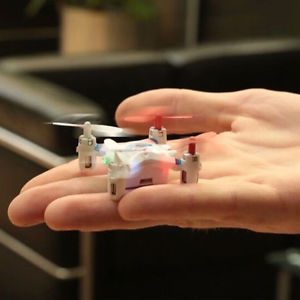
The FLA program calls for the development of high-speed, autonomous drones to navigate in cluttered indoor environments, such as a structurally damaged building. The DARPA solicitation states: “Birds and flying insects maneuver easily at high speeds near obstacles. The FLA program asks the question “How can autonomous flying robotic systems achieve similar high-speed performance?” The solicitation specifies that the new technology must work without a communications or GPS system to navigate, as the method fails where GPS is lost or not available. “Birds and flying insects are able to perform well without using predetermined waypoints or an external position reference system,” the requirements documents state.
Basing the speed goal of the program on the “performance of existing animals (e.g. birds)” the new drones will be required to meet a 45 mph speed goal. Other requirements include an autonomous range of 1km and a flight duration of up to 10 minutes. DARPA says that the FLA technology could assist first responders by providing surveillance in “denied areas” such as structurally damaged buildings.
Draper, Inc. also describes their research on the FLA program in terms of insects and birds, stating that their team is “inspired by nature’s winged predators.”
“Developing a system that can recognize and respond to its environment quickly while flying nearly 45 miles per hour in a real world environment presents considerable challenges,” said Steve Paschall, Draper’s FLA technical director. “Our sensing and algorithm configurations must enable the vehicle to demonstrate agile maneuvering, high reliability, and safety, as any errors at high speed could be catastrophic. Such high speeds dictate that the vehicle handle planning and control with low-latency sensing and processing.”
MIT researcher Nicholas Roy, of MIT’s CSAIL (Computer Science Artificial Intelligence Laboratory) will lead the MIT team. Roy has recently returned to Cambridge after working with Google X on the Google’s “Project Wing” delivery drone.

Miriam McNabb is the Editor-in-Chief of DRONELIFE and CEO of JobForDrones, a professional drone services marketplace, and a fascinated observer of the emerging drone industry and the regulatory environment for drones. Miriam has penned over 3,000 articles focused on the commercial drone space and is an international speaker and recognized figure in the industry. Miriam has a degree from the University of Chicago and over 20 years of experience in high tech sales and marketing for new technologies.
For drone industry consulting or writing, Email Miriam.
TWITTER:@spaldingbarker
Subscribe to DroneLife here.